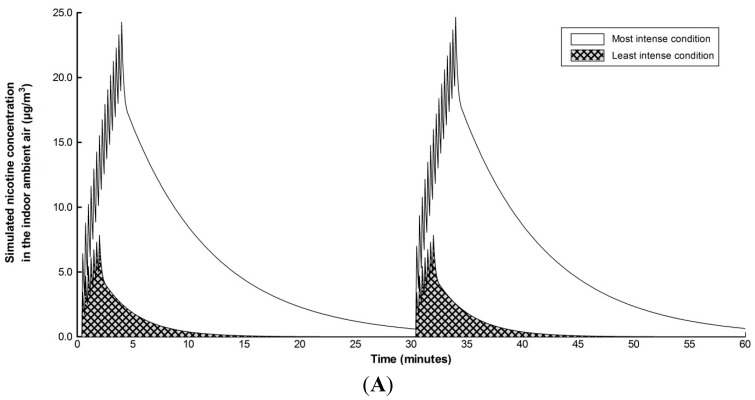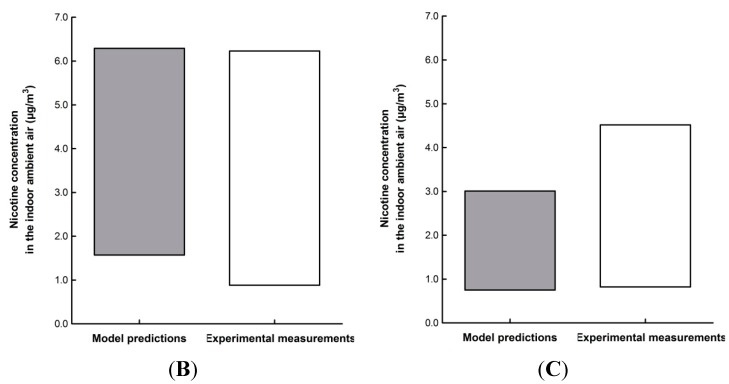Figure 3.
Estimation of the nicotine concentration in the indoor ambient air using experimentally-derived model input parameters. (A) Simulated change in nicotine concentration in the ambient air of a 39 m3 room over 1 h for two extreme experimental conditions. E-cigarette aerosols were generated using a smoking machine and released into the room under two extreme experimental conditions. The most intense condition corresponds to high e-cigarette nicotine delivery, 58 µg of nicotine delivered per puff; high aerosol emission pattern, 15 puffs every 10 s repeated at 30 min interval; and restricted room ventilation, 1.37 air changes per hour. The least intense condition corresponds to low e-cigarette nicotine delivery, 31 µg of nicotine delivered per puff; low aerosol emission pattern, 7 puffs every 10 s repeated at 30 min interval; and intensive room ventilation, 12.6 air changes per hour. To simulate the two extreme experimental conditions, the following assumptions were made: speed of aerosol propagation, 2 m/min; speed of aerosol deposition, 0.06 m/min; and nicotine retention, 0% (aerosols were generated using a smoking machine). (B,C) Comparison between model predictions and experimental measurements for the concentration of nicotine in the indoor ambient air 1 metre from the smoking machine when aerosols were generated from three different e-cigarettes (31 µg, 56 µg or 58 µg nicotine delivered per puff) with two variants of emission pattern (“low”, 7 puffs or “high”, 15 puffs) under restricted room ventilation (B) or intensive room ventilation (C). Distribution of model predictions is shown in grey range bar graphs and experimental measurements in white.


